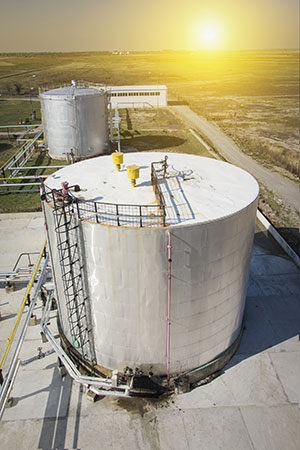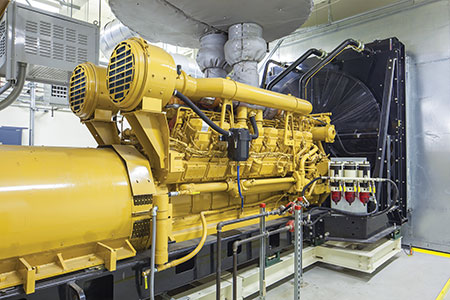Some readers of this article may be surprised that this subject came to discussion. However, reality has demonstrated that this issue has created (and continues to create) significant inconsistency among the designers, suppliers of the generators, and the AHJ’s.
Let’s start with an emergency generator and to state the following facts:
An emergency generator is mandated as the emergency power supply source by Article 3.2.7.9. of the National Building Code of Canada (NBCC) for a specific Life Safety Equipment listed in this NBCC Article.
An emergency generator is required as the emergency power supply source by Clause 6.7.1 of the CSA standard Z32 and by Rule 24-306 of the CE Code for an essential electrical system in a healthcare facility.
An emergency generator could be used as the emergency power supply source for emergency lighting and for a fire alarm system in accordance with Article 3.2.7.4. and Article 3.2.7.8. of the NBCC respectively.
Note: Article 3.2.7.4. of the NBCC mandates use of batteries or a generator as an emergency power supply source for emergency lighting, and Article 3.2.7.8. of the NBCC requires use of batteries or a generator as an emergency power supply source for a fire alarm system.
Article 3.2.7.5. of the NBCC and Clause 6.7.1of Z32 state that the emergency power supply system must comply with the CSA standard C282.
After these undisputed facts have been presented, we can review Clause 7.3 of C282 and confirm that it provides the following requirements:
“7.3.1.1
A quantity of fuel sufficient for operating the engine under maximum site design load for at least 2 h shall be maintained on site at all times.
“7.3.1.2
In addition to Clause 7.3.1.1, where a generator set is required for emergency power supply to essential electrical systems in conformance with CSA Z32, a fuel supply shall be maintained on site at all times that is sufficient for operating the engine under full load for at least
(a) 24 h for Class B and C facilities; and
(b) 72 h for a Class A facility.
Provisions shall be made for automatic refilling to the day tank(s) from a fuel supply stored elsewhere on site.

“7.3.7
Where emergency generators operate on a liquid fuel provided by on-site fuel storage tanks, each engine shall have a dedicated day tank, located in the service room, that has sufficient functional capacity to operate the engine for 4 h under maximum site design load.
“Notes:
(1) This Clause requires double the minimum fuel storage specified in Clause 7.3.1. A lesser surplus capacity may be used if permitted by the authority having jurisdiction.”
As it can be seen from Clause 7.3.1.1 of C282, the NBCC required emergency generator must be provided with an amount of fuel sufficient for operating the engine under maximum site design load for at least 2 h. This C282 minimum requirement (for not less than 2 h of a fuel supply necessary to facilitate performance of the emergency generator) is consistent with provisions of Article 3.2.7.9. of the NBCC. However, Clause 7.3.1 of C282 also states that such minimum amount of fuel would have to be increased so, as to satisfy 72 hours of uninterrupted generator performance when the emergency generator is required by Z32 for an essential electrical system in a Class A Health Care Facility.
It is interesting to note that Clause 7.3.7 of C282 (see above) mandates that a day tank located in the generator service room must have sufficient functional capacity for operating the engine under maximum site design load for 4 h under maximum site design load.
The above stated requirements of C282 lead the generator suppliers and designers to a need to accommodate rather large day tanks in the generator service rooms, and such need is often challenged by the fire safety officials who administer the National Fire Code of Canada (NFCC) in their respective jurisdictions.
Many electrical designers indicate that fire safety officials mandate compliance of storage tanks inside buildings with Clause 6.3.2.2 of NFPA 37 as follows:
“6.3.2.2*
Fuel tanks not in a room by themselves shall not exceed 2500 L (660 gal) capacity. Fuel tanks larger than 2500 L (660 gal) capacity shall be enclosed in a room in accordance with 6.3.5 or 6.3.6. Not more than one 2500 L (660 gal) capacity tank, or two or more tanks with an aggregate capacity of not more than 2500 L (660 gal), shall be connected to any one engine.
Exception: Fuel tanks of any size shall be permitted within engine rooms or mechanical spaces, provided the engine or mechanical room is designed using recognized engineering practices with suitable fire detection, fire suppression, and containment means to prevent the spread of fire beyond the room of origin.”
However, it should be noted that compliance with NFPA 37 is only mandated for indoor installation of storage tanks using Class I flammable liquids, and a diesel fuel is considered as Class II combustible liquid.
Thus, in accordance with Article 4.3.13.2. of the NFCC, reference to NFPA 37 is not applicable for installation of storage tanks containing diesel fuel for an emergency generator. It should be also noted that in conformance with Article 3.6.2.8. of the NBCC, an emergency generator service room (that must contain the generating set and equipment related for power supply system, including a day tank) is required to be separated from the remainder of the building by a fire separation having a fire resistance rating not less than 2 h.
So, how to reconcile performance requirements of C282 and safety provisions of the NFCC in respect to the installation of storage tanks containing diesel fuel for an emergency generator?
The answer could be found in Table 4.3.13.4.B. of the NFCC.
This NFCC Table allows storage of more than 20000 L of Class II liquid in a storage tank installed in a building provided that compliance with Article 4.3.13.5 shown below is met:
“4.3.13.5. Storage Tank Construction
1) Storage tanks with an individual capacity exceeding 2500 L but not exceeding 20000 L that are used in conformance with Table 4.3.13.4.8. shall be
a) of double-walled construction in conformance with Clause 4.3.1.2.(1 )(e) or a minimum of 300 deg. secondarily contained construction, and
b) Monitored for leakage in conformance with Sentence 4.4.2.1.(7).
2) Storage tanks with an individual capacity exceeding 20 000 L that are used in conformance with Table 4.3.13.4.8. shall
a) conform to Clause 4.3.1.2.(1 )(1), and
b) be monitored for leakage in conformance with Sentence 4.4.2.1.(7).”
Therefore, from a practical application, it should not be an issue to meet the requirements of C282 and the NFPA regarding the storage tanks for an emergency generator diesel fuel.
Designers also should be aware that Clause 7.3.2 of C282 allows for the following alternative to the onsite fuel supply storage:
“7.3.2
Notwithstanding Clause 7.3.1, when it can be demonstrated to the authority having jurisdiction that the reliability of the off-site utility fuel supply and the associated piping meets the requirements of Clause 7.3.1 for a continuous fuel supply, on-site storage might not be required.”
However, the alternative allowed by this C282 provision is strictly conditional on proof of reliability of such off-site fuel supply source and on acceptance of such fuel supply arrangement by the AHJ. In fact, Article 3.2.7.7. of the NBCC recognizes such fuel supply arrangement, and it mandates installation of a suitably identified separate shut-off valve outside the building, when this fuel supply arrangement is undertaken.
Now we can discuss fuel supply for stand-by generators (i.e., generators that are not mandated by the NBCC as the required emergency power supply source).
When installation of such stand-by (non-emergency supply) generator is contemplated by the design, the generator becomes a typical fuel-fired appliance, and it shall be installed in a service room conforming to Article 3.6.2.1. of the NBCC.
Installation of such generators do not have to comply with all applicable provisions of C282, and scope of this standard reflects this fact.
If a diesel fuel (Class II combustible liquid) is used as a fuel source for such generator and the storage of this fuel is intended in storage tanks inside a building, then maximum quantity of fuel and location of storage tanks have to comply with Article 4.3.14.4. of the NFCC.
If Class I flammable liquid is used as the fuel source, then compliance with NFPA for installation of storage tanks inside buildings would have to be met in accordance with Article 4.3.13.2. of the NFCC.
However, as usual, timely communication with the applicable AHJ on this subject is paramount.














Find Us on Socials